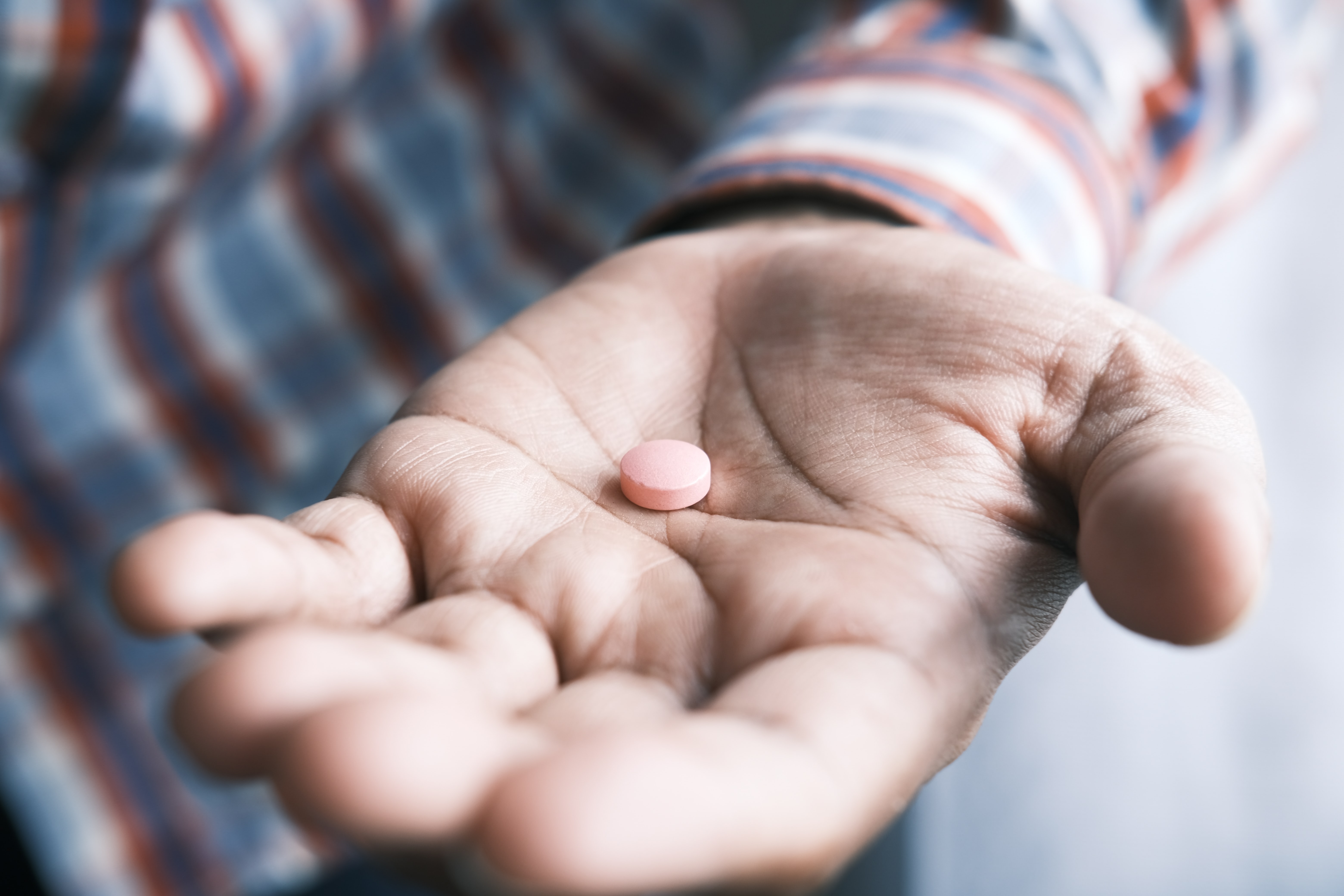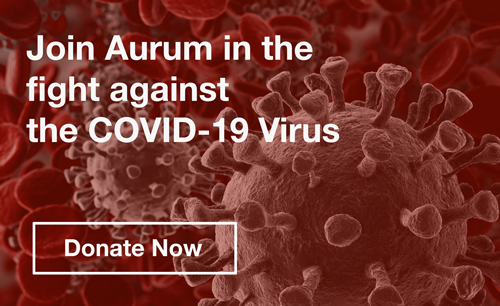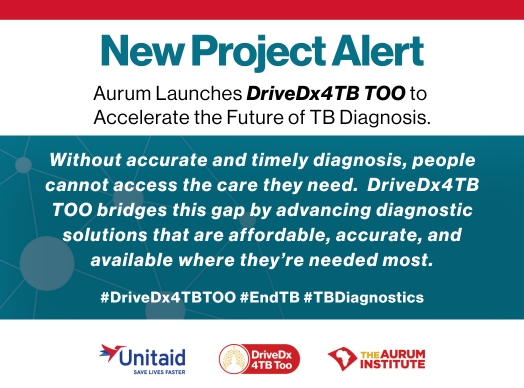Aurum Group CEO Prof Gavin Churchyard presented at the Forum on Microbial Threats workshop recently. The Forum which is part of the National Academies of Sciences, Engineering, and Medicine, brought global experts to discuss Innovations for Tackling Tuberculosis in the Time of COVID-19. In his presentation, Prof Churchyard looked at gaps and opportunities in the management of latent TB infection and barriers to the implementation of TB preventive therapy (TPT). Read the full report here.
Gaps and opportunities in management of latent TB infection
Prof Churchyard discussed gaps and opportunities in the management of latent TB infection and barriers to the implementation of tuberculosis preventive therapy (TPT). He also identified research gaps within the TB prevention cascade—specifically for people living with TB and HIV and for household contacts of people with TB—and highlighted prospects for future TB regimens. Although progress has been made toward achieving the UN High-Level Meeting targets for 2022 for scaling up the provision of TPT to people of all ages and people living with HIV, efforts to scale up TPT for household contacts have been insufficient to meet the 2022 goals. Notably, less than 1 percent of the targeted 20 million household contacts aged 5 years or older have received TPT (WHO, 2020). Churchyard noted that a recent WHO meeting identified barriers to TPT implementation, research gaps along the cascade of prevention, and specific research gaps related to high-risk groups (Oxlade et al., 2021).
Research Priorities in the Implementation of TPT and the Prevention Cascade
At the health system level, barriers to TPT implementation include a lack of priority of TB control programs, limited access to diagnostics and drugs, inadequate financing, and lack of a patient-centered perspective (Oxlade et al., 2021). To overcome those barriers, research priorities include:
- collecting data to build a stronger public health case for the programmatic management of TPT,
- creating simplified diagnostic algorithms for TB disease and developing shorter treatment regimens,
- understanding financing gaps, modelling the cost-effectiveness of TPT, and modelling the effect of TPT on TB incidence and mortality, and
- better understanding the perspectives of patients and clients in diverse settings about the risks and benefits of TPT.
Research gaps also pervade the cascade of prevention, said Churchyard. He highlighted sets of research needs and priorities in the domains of (1) better identifying and connecting to populations at risk, (2) improving screening and testing for TB infection, (3) more accurately excluding active TB infection, and (4) improving the initiation and completion of TPT (see Box 3-3) (Oxlade et al., 2021).
Research Progress and Priorities in Tuberculosis Preventive Treatment for High-Risk Groups
Churchyard highlighted research progress and priorities in the provision of TPT to high-risk groups, including people living with HIV, household contacts under 5 years old, household contacts aged 5 years or older, and other people at risk.
WHO recommends a range of TPT regimens for people with HIV, including isoniazid and rifapentine for 3 months (3HP) and isoniazid and rifapentine for 1 month (1HP). The DOLPHIN trial showed that 3HP was well tolerated and safe for people with HIV on antiretroviral therapy without dose adjustment of dolutegravir, and virologic suppression was maintained through the regimen (Dooley et al., 2020). The DOLPHIN TOO trial is amending the original protocol to describe the rate of decline of plasma HIV-1 viral load among antiretroviral naïve participants starting isoniazid preventive therapy or 3HP regimens with a dolutegravir antiretroviral regimen.15
TPT guidelines for children younger than 5 are complex, Churchyard explained. Regimens are determined by age, HIV status, and whether or not the antiretroviral therapy includes nevirapine or lopinavir/ritonavir. Consequently, these guidelines require three different child-friendly TPT regimens. The guidelines should be simplified such that all children and older contacts in each household can receive the same TPT regimen, he said. Tuberculosis Trials Consortium Study 35 is a dose finding and safety study of providing 3HP to HIV-infected and HIV-uninfected children with latent TB infection.16 The study is testing a child-friendly, fixed dose combination tablet of 3HP that dissolves in water to optimize doses for the youngest children. In 2022, the DOLPHIN-Kids study will assess the safety, tolerability, and pharmaco- kinetics of 3 months of 3HP among infants, children, and adolescents living with HIV and taking dolutegravir as an antiretroviral therapy.17
The Brief Rifapentine-Isoniazid Evaluation for TB Prevention (BRIEF TB) trial demonstrated the efficacy of an ultrashort course 1HP regimen of daily isoniazid and rifapentine in HIV-positive persons (Swindells et al., 2019).18 Compared to the 9-month isoniazid regimen, 1HP was non-inferior in terms of efficacy and superior in terms of safety, tolerability, and treatment completion. Currently, there is no evidence for use of this regimen in HIV-negative persons, children, or pregnant women, and dolutegravir doses may need to be adjusted for HIV-positive patients on antiretroviral therapy.19 The Impact4TB One-to-Three superiority trial will compare the use of the 1HP regimen to the 3HP regimen in adult and adolescent HIV-positive persons and household contacts in terms of treatment completion, treatment-limiting adverse events, safety, and cost-effectiveness. The study will begin in August 2022 across sites in South Africa, Indonesia, India, and Mozambique.
Churchyard added that more cost-effectiveness data is required to sup- port the increased use of 1HP. The cost-effectiveness of 1HP is driven by 1HP completion rates and efficiency, the cost of rifapentine, and the prevalence of latent TB. The 1HP regimen would cost substantially more to achieve the outcomes currently achieved by 3HP regimens. However, a reduction in the price of rifapentine can significantly lower the regimen cost.
Pregnant women have a higher risk of TB, said Churchyard. Two clinical trials suggest an association between HIV-infected pregnant women receiving isoniazid preventive treatment and increased risk of adverse pregnancy outcomes. Evidence for the use of rifapentine-based TPT regimens among pregnant women is beginning to emerge. The IMPAACT 2001 study provided the first evidence that rifapentine was safe for HIV-infected and HIV-uninfected pregnant women and that the dose of rifapentine need not be adjusted. The WHIP3TB trial has collected data on pregnancy outcomes for pregnant HIV-positive women, which were reported in late 2021.20 In late 2022, the DOLPHIN MOMS study will evaluate the safety, tolerability, and pharmacokinetics of 1HP in comparison with 3HP initiated antepartum versus postpartum.
Churchyard also discussed the use of TPT for household contacts of TB patients by presenting results from the Protecting Households on Expo- sure to Newly Diagnosed Index Multidrug-Resistant Tuberculosis Patients (PHOENIx MDR-TB) trial conducted in eight high-burden countries.21 The PHOENIx MDR-TB feasibility trial demonstrated that 77 percent of house- hold contacts of MDR TB patients were in a high-risk group for developing TB (Gupta et al., 2020). Among household contacts that were not in a risk group at baseline, more than 20 percent tested positive for infection within year, suggesting that the majority of household contacts of MDR TB patients are at risk of developing TB and would benefit from TPT.
However, further research is needed to understand the advantages and disadvantages of testing for TB infection among household contacts. Furthermore, the feasibility trial demonstrated that children younger than 5 years and HIV-infected household contacts aged 5 years and older had the greatest risk of developing TB. Research is also needed to understand the epidemiological effects of treating high-risk household contacts of various ages. It has been suggested that TPT has limited value in high-transmission countries because of the risk of reinfection in communities, Churchyard added. One modelling study conducted in 2014 found that while household contact tracing alone may not be sufficient to reduce TB incidence, the com- bination of TPT with household contact tracing may significantly increase reductions in TB incidence (Kasaie et al., 2014).
To address the gap in evidence from randomized trials on providing TPT for contacts exposed to MDR TB, three trials are underway: the Tuberculosis Child Multidrug-resistant Preventive Therapy trial (TB-CHAMP),22 the VQUIN MDR trial,23 and PHOENIx MDR-TB. TB-CHAMP is a cluster randomized, community-based superiority trial providing paediatric dispersible levofloxacin tablets daily for six months to children aged 5 years or younger. The VQUIN MDR trial is evaluating a 6-month daily levofloxacin regimen in a cluster randomized, community-based superiority trial targeting tuberculin skin test (TST)–positive participants of all ages, including infants less than 6 months old. The PHOENIx MDR-TB trial is comparing 26-week daily regimens of isoniazid or delamanid, targeting children younger than 5, people who are HIV-positive, and people older than 5 who tested positive for TB through either the TST or interferon gamma release assay (IGRA).24 While awaiting results from these trials, WHO has conditionally recommended the use of a TPT regimen of 6 months daily levofloxacin with or without ethambutol or ethionamide (WHO, 2018).
Future Tuberculosis Preventive Treatment Regimens
Churchyard emphasized the importance of managing the global burden of TB infection to meet END TB targets. In addition to addressing research gaps described above, further research is needed to improve potency and further reduce the duration of treatment for TPT. Although TPT regimens have advanced in recent years, maximizing the benefits of TPT warrants further innovation, said Churchyard. To that end, additional ultra-short course regimens are currently being evaluated. The 2R2 trial is comparing the use of higher doses of rifampicin for 2 months with the standard TPT rifampicin dose with the aim of determining whether doubling or tripling the standard dose is safe and effective. The Assessment of the Safety, Tolerability, and Effectiveness of Rifapentine Given Daily for Latent Tuberculosis Infection (ASTERoiD) study is assessing the safety, tolerability, and effectiveness of a 6-week daily rifapentine regimen with regimens between 12 and 16 weeks in length.25 It may be possible to reduce the duration of TPT for drug- susceptible TB infections using 2-week regimens containing bedaquiline with rifapentine (Zhang et al., 2011). Furthermore, it may be possible to reduce the duration of TPT for MDR TB contacts to 1 month with bedaquiline alone or in combination with other drugs. Long-acting injectable TB drugs may also hold great promise for TPT in the future, Churchyard added.
- 19. The A5372 trial will evaluate whether doses of dolutegravir need to be adjusted for patients taking this 1HP regimen.
- 20. Abstract from the 52nd World Conference on Lung Health, held on Oct 19-22, 2021, is available here (page S61): https://theunion.org/sites/default/files/2021-10/UNION2021_ Abstracts_High.pdf (accessed February 8, 2022).
- 21. More information about the Protecting Households on Exposure to Newly Diagnosed Index Multidrug-Resistant Tuberculosis Patients trial is available from https://clinicaltrials.gov/ ct2/show/NCT03568383 (accessed December 15, 2021).
- 22. More information about the Tuberculosis Child Multidrug-resistant Preventive Therapy trial is available from https://www.mrcctu.ucl.ac.uk/studies/all-studies/t/tb-champ (accessed December 15, 2021).
- 23. More information about the VQUIN MDR trial is available from https://www.woolcock vietnam.org/vquin (accessed December 15, 2021).
- 24 There are two tests that can be used to detect TB infection, the tuberculin skin test (or TB skin test, TST) and a blood test to measure release of interferon gamma (IGRA). See https://www.cdc.gov/tb/topic/testing/tbtesttypes.htm (accessed January 3, 2022).












